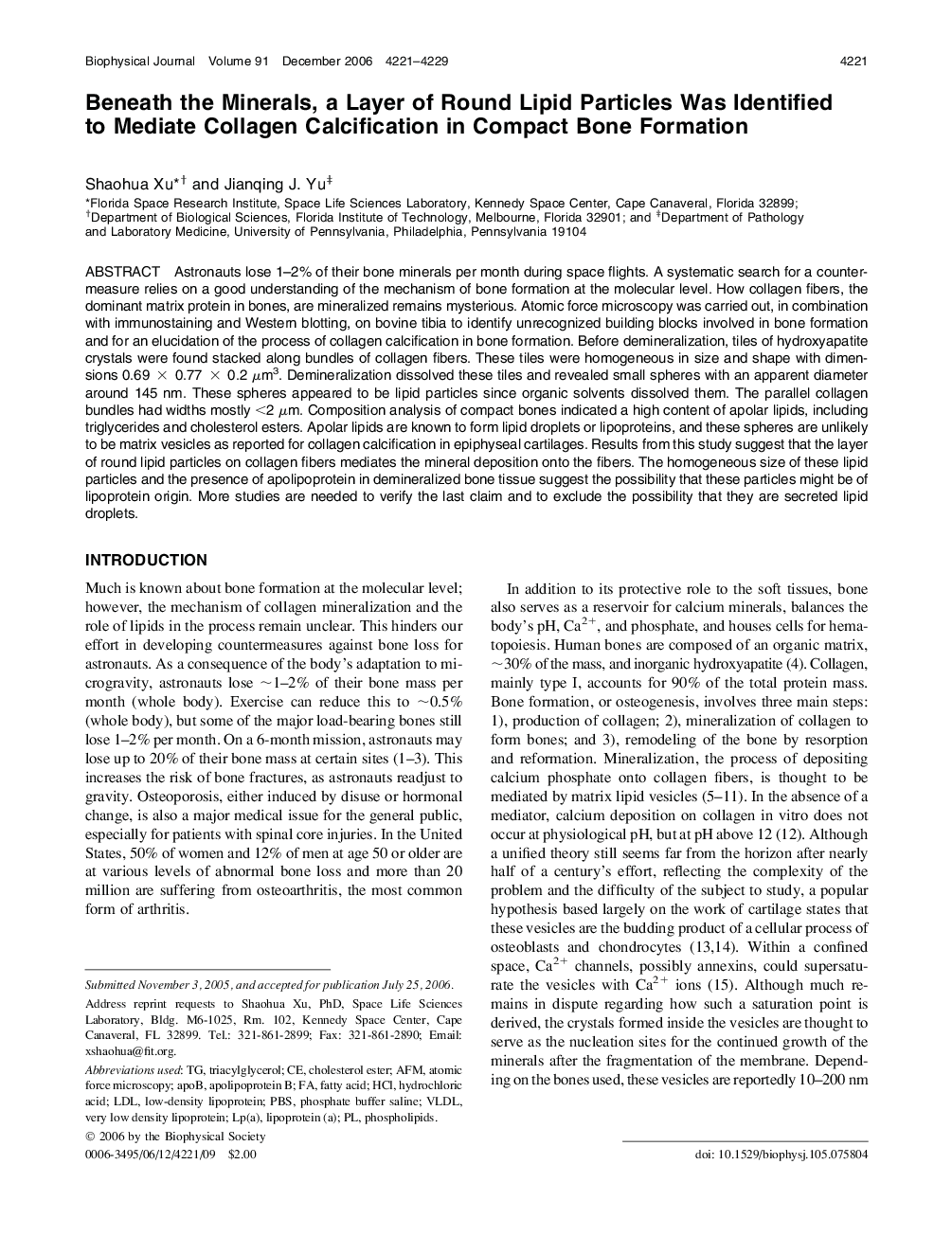| کد مقاله | کد نشریه | سال انتشار | مقاله انگلیسی | نسخه تمام متن |
|---|---|---|---|---|
| 1958391 | 1057910 | 2006 | 9 صفحه PDF | دانلود رایگان |

Astronauts lose 1–2% of their bone minerals per month during space flights. A systematic search for a countermeasure relies on a good understanding of the mechanism of bone formation at the molecular level. How collagen fibers, the dominant matrix protein in bones, are mineralized remains mysterious. Atomic force microscopy was carried out, in combination with immunostaining and Western blotting, on bovine tibia to identify unrecognized building blocks involved in bone formation and for an elucidation of the process of collagen calcification in bone formation. Before demineralization, tiles of hydroxyapatite crystals were found stacked along bundles of collagen fibers. These tiles were homogeneous in size and shape with dimensions 0.69 × 0.77 × 0.2 μm3. Demineralization dissolved these tiles and revealed small spheres with an apparent diameter around 145 nm. These spheres appeared to be lipid particles since organic solvents dissolved them. The parallel collagen bundles had widths mostly <2 μm. Composition analysis of compact bones indicated a high content of apolar lipids, including triglycerides and cholesterol esters. Apolar lipids are known to form lipid droplets or lipoproteins, and these spheres are unlikely to be matrix vesicles as reported for collagen calcification in epiphyseal cartilages. Results from this study suggest that the layer of round lipid particles on collagen fibers mediates the mineral deposition onto the fibers. The homogeneous size of these lipid particles and the presence of apolipoprotein in demineralized bone tissue suggest the possibility that these particles might be of lipoprotein origin. More studies are needed to verify the last claim and to exclude the possibility that they are secreted lipid droplets.
Journal: - Volume 91, Issue 11, 1 December 2006, Pages 4221–4229